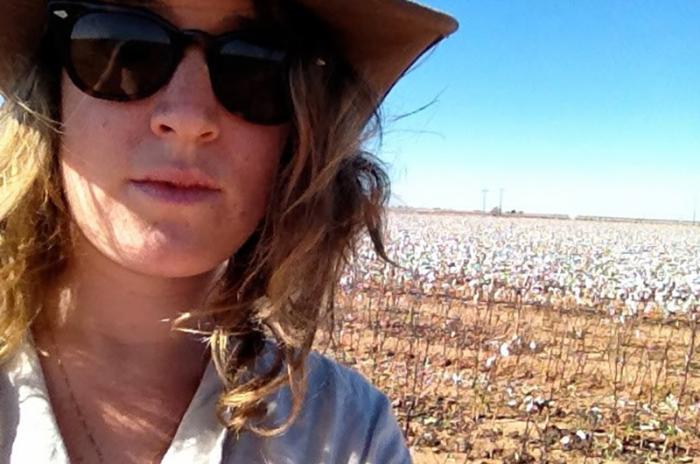As a teenager growing up on the Vineyard, Sofi Thanhauser prowled the bins of clothes discarded at the Dumptique in West Tisbury. The vintage items she fell in love with eventually led her to wonder about the process of clothing production, specifically how did what the world wears move from one or two essential items to mass-produced clothes?
The writer’s response was to conceive an ambitious project for herself.
“I wanted to do for clothes what Michael Pollan had done for food,” she said a recent interview with the Gazette.
The result of that initial musing is Worn: A People’s History of Clothing, published last month by Pantheon Books. The book is acclaimed as a social history of the five main fabrics — linen, cotton, silk, synthetics and wool — from which clothing is made. Ms. Thanhauser uses textiles as a pretext to weave together history, science, biography and mythology. The narratives read as good storytelling packed with anecdotes and travel narrative as well as historical facts and statistics.
Ms. Thanhauser said she first started thinking about Worn while researching her undergraduate thesis in history at Columbia University. But after graduation she returned to the Vineyard and put the idea on hold. Instead, she chose to follow other creative endeavors, performing as a singer/songwriter at Che’s Lounge, and creating with friends Rachael Curtin and Lila Fisher handmade underwear using cotton, Japanese lace and black walnut dye brewed in a cauldron.
But then she accompanied her mother April to a creative writing group led by Harriet Bernstein in West Tisbury. That led to a week-long residency at the Martha’s Vineyard Institute for Creative Writing. The experience of sharing her work was a revelation that led to her decision to focus on a career in writing.
“A reading is not a form I was familiar with,” she said. “I knew the form of a concert. I always considered the words in my songs to be intrinsic to the meaning of them. In the setting of a bar or a venue, people would be talking and not really listening to the words. For some people that’s fine, but for me it wasn’t. So I became really taken by the form of a literary reading.”
She became friends with and worked for writers Geraldine Brooks and her husband, the late Tony Horwitz.
“They were working writers and I had never met anybody before who was that,” Ms. Thanhauser recalled. “They had a level of seriousness and commitment to what they were doing and that was their life. It was eye-opening and made a strong impression on me. It provided me with a huge awakening.”
She returned to school in 2012 to study for a masters degree in creative writing and natural resources at the University of Wyoming. The university’s resources enabled her to access travel research grants which included an impactful trip to India.
By the time she finished school she had a manuscript draft but its future was uncertain.
“I got feedback that it’s a lot of really good material without a form. That was really devastating. But it was true,” she said.
She moved to Brooklyn and began teaching creative writing at Pratt Institute while also continuing to research her potential book during trips to Vietnam, China, Arizona and Texas. At one point, when she considered giving up on the project, a Facebook post connected her with Laura Usselman, who is now her agent. Ms. Usselman provided essential feedback that led to the book’s current structure of organizing the topics around the different textiles in order to access the big issues of women’s labor, colonialism, environmental sustainability, power and wealth.
One of the points most strongly felt throughout Ms. Tanhauser’s book is how clothing conveys location, either physical or emotional. The clothing item that signifies the Vineyard for Ms. Thanhauser was an unexpected gift given to her after a yoga class at the Mansion House one morning about 15 years ago.
“It’s a pair of corduroys made by the company Woodland Waders,” she said. “They no longer exist but they were on the Island in the ‘80s and ‘90s and made beautiful women’s clothing. The silhouette is different from most garments. Their items are flattering, comfortable and you can really move. My corduroys are high waisted, almost like overalls, and have suspenders. They came with a cropped, boiled wool jacket that I no longer have. I’ve done nothing special to keep them up and they’re still in perfect condition. They’re just that well made.”
The origin of these corduroys? The West Tisbury Dumptique.




